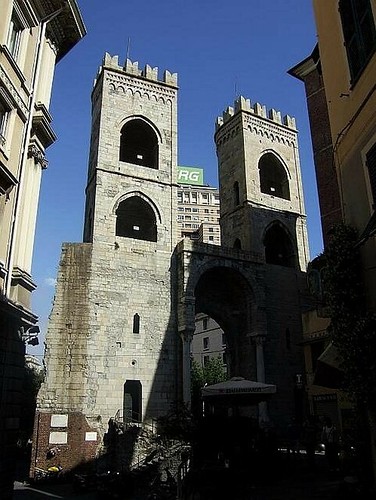In the heart of Genoa’s historic center, Porta Soprana stands tall as one of the city’s most iconic medieval landmarks. This 12th-century stone gate is the most prominent surviving part of the city’s ancient defensive walls and once marked the main entrance to medieval Genoa.
A Gateway Through Time
Built in the 1100s, Porta Soprana was part of the fortified wall that surrounded Genoa for protection during its rise as a powerful maritime republic. The gate, with its impressive twin towers, served both as a defensive structure and a symbol of Genoese strength.
Though the walls that once extended from the gate are now gone, Porta Soprana has been carefully restored over the centuries and remains a beloved monument that attracts both locals and tourists.
What to See Nearby
Just steps away from Porta Soprana, you can visit two other important historical sites:
- St. Andrew Cloister (Chiostro di Sant’Andrea): The peaceful remains of a medieval monastery, now relocated near the gate.
- The House of Christopher Columbus: A small stone building believed to be the childhood home of the famous explorer.
Together, these sites offer a glimpse into Genoa’s past and the lives of its most legendary figures.

